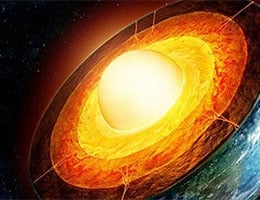 The Royal Spanish Academy ( RAE ) recognizes almost twenty meanings of the term mantle in its dictionary. Coming from the Latin word mantum , the concept can be used to refer to a large mantilla .
The Royal Spanish Academy ( RAE ) recognizes almost twenty meanings of the term mantle in its dictionary. Coming from the Latin word mantum , the concept can be used to refer to a large mantilla .
A cloak, in this framework, is a garment of outerwear that lacks sleeves . In the context of religion, the garment that covers the Virgin Mary and the cape that certain ecclesiastics wear over their tunic is called a mantle.
The mantle, on the other hand, is the garment worn by knights of military orders and princes, which was tied over the shoulders and covered the body until it reached the ground. The capitular mantle , the knightly mantle and the smoke mantle are part of this class of items.
Mantle is also the stratum that covers a surface or the layer that surrounds something. The Earth's mantle , for example, is the solid layer found between the central core of planet Earth and the Earth's crust.
In other rocky planetary bodies we can also find a mantle: both Venus and Mercury, Mars, the Moon, the asteroid Vesta and two satellites of Jupiter have it. The requirement for the formation of a mantle to take place is that the planetary body has gone through planetary differentiation , a process through which it separates and differentiates as a consequence of its evolution at a physical and chemical level.
With silicates as the main component, the Earth's mantle has a solid and elastic part (the inner mantle) and a fluid part (the outer mantle). It develops between approximately 33 kilometers and 2900 kilometers deep .
The process of differentiation of the Earth's mantle began approximately 3.8 billion years ago , at which time the components of the Earth segregated gravimetrically and this caused stratification. At that time, the Earth was a protoplanet: an extremely small body, as if it were an "embryo" of what it will be in the future; Its size resembles that of the Moon.
The pressure that can be seen at the base of the mantle is close to 140 pascals , a unit belonging to the International System that is equivalent to one ten-thousandth of an atmosphere. The inner mantle is elastic and solid, while the outer mantle is viscous and fluid.
 The main difference between the mantle and the Earth's crust occurs in their chemical features and mechanical behavior . This causes there to be a defined sudden alteration (something also known as discontinuity ) in the properties of its materials. This is the so-called Mohorovičić discontinuity , named after the scientist who discovered it, Andrija Mohorovičić .
The main difference between the mantle and the Earth's crust occurs in their chemical features and mechanical behavior . This causes there to be a defined sudden alteration (something also known as discontinuity ) in the properties of its materials. This is the so-called Mohorovičić discontinuity , named after the scientist who discovered it, Andrija Mohorovičić .
For many years scientists believed that the Mohorovičić discontinuity was the line that divided the plastic structure of the mantle from the rigid crust, that is, where movement occurred between the plates of the plastic asthenosphere and the rigid lithosphere.
But time changed the perspective, since the most recent research has proven that it is located in a considerably lower position, in the upper mantle, approximately 70 kilometers below the oceanic crust and 150 kilometers from the continental crust. The mantle beneath the crust is composed of cold materials even though the discontinuity separates it from the crust.
In colloquial language , finally, a cloak is called something that hides, protects or covers something in a symbolic sense: “Under a cloak of suspicion, tomorrow the winner of the literary prize will be announced,” “For years the sect moved in a cloak of silence, but little by little their victims are beginning to speak” , “The team once again appeared confused under a cloak of doubts” .
